






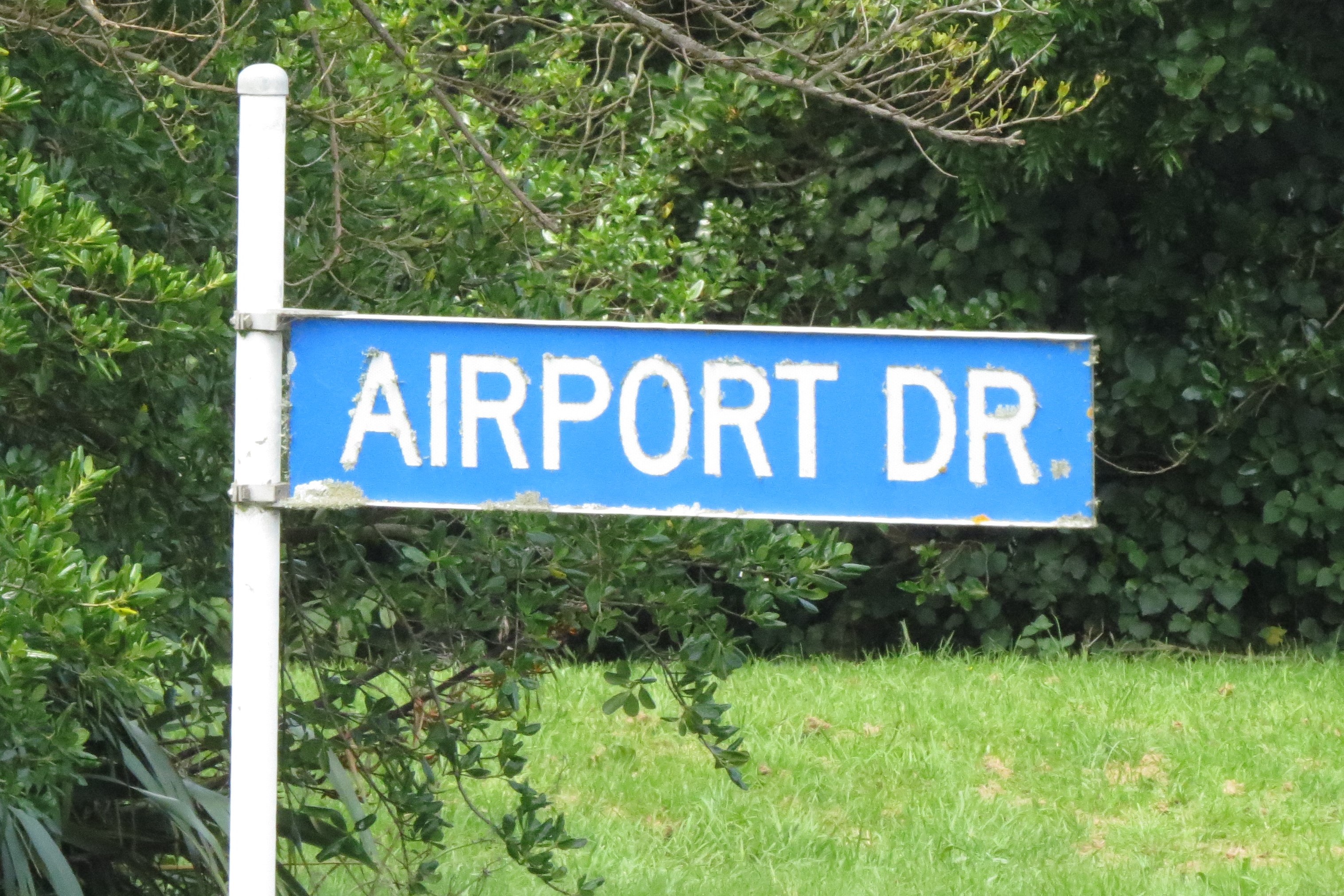
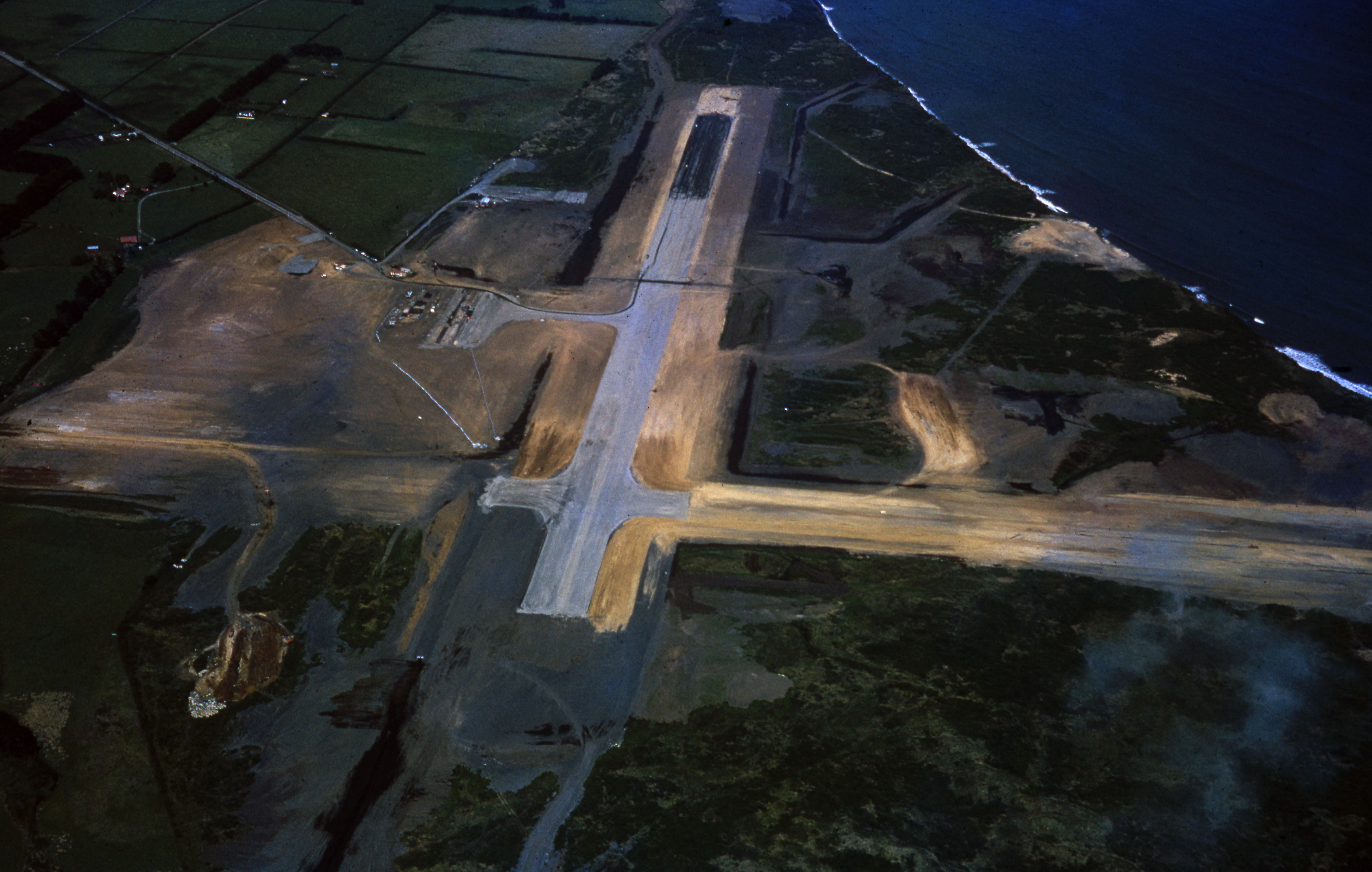
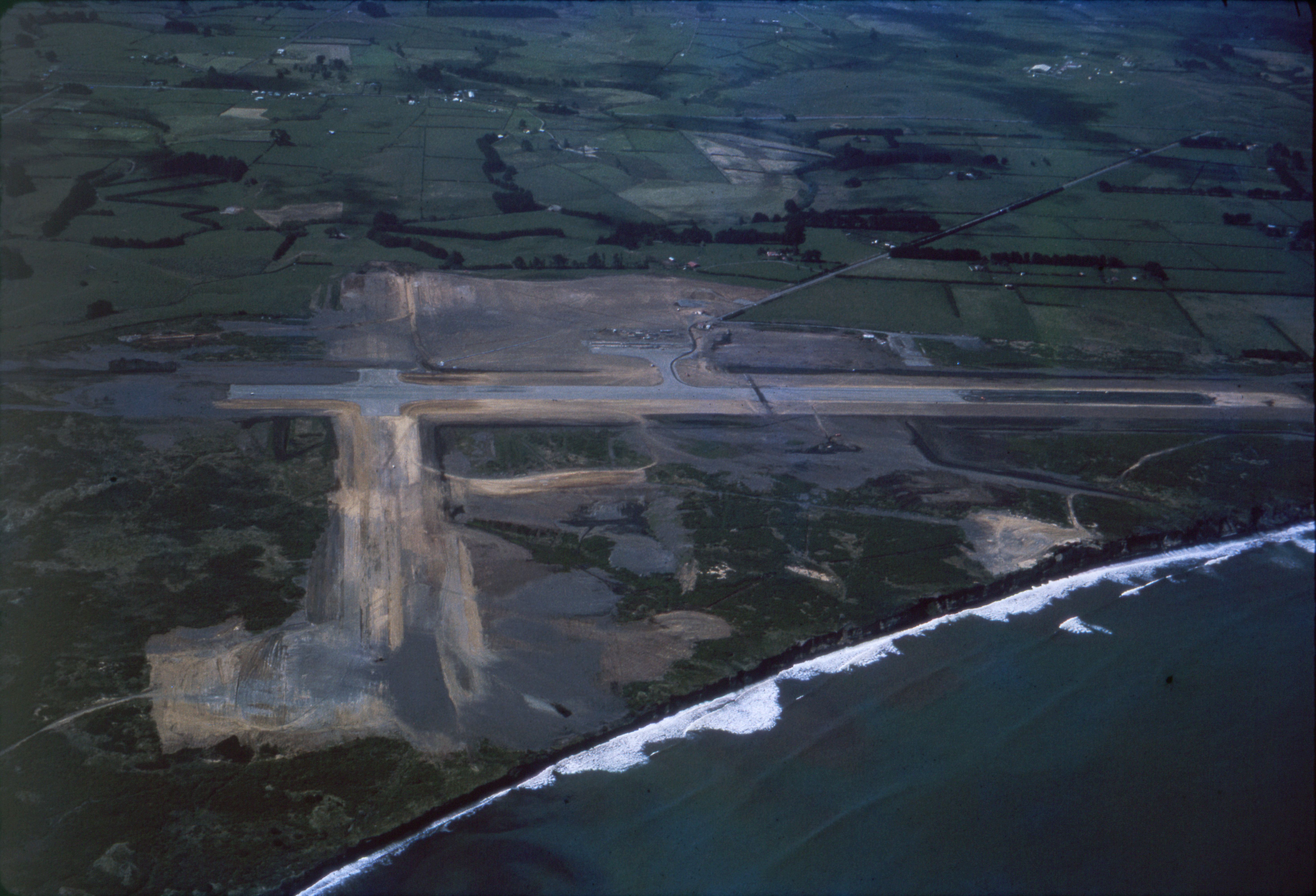
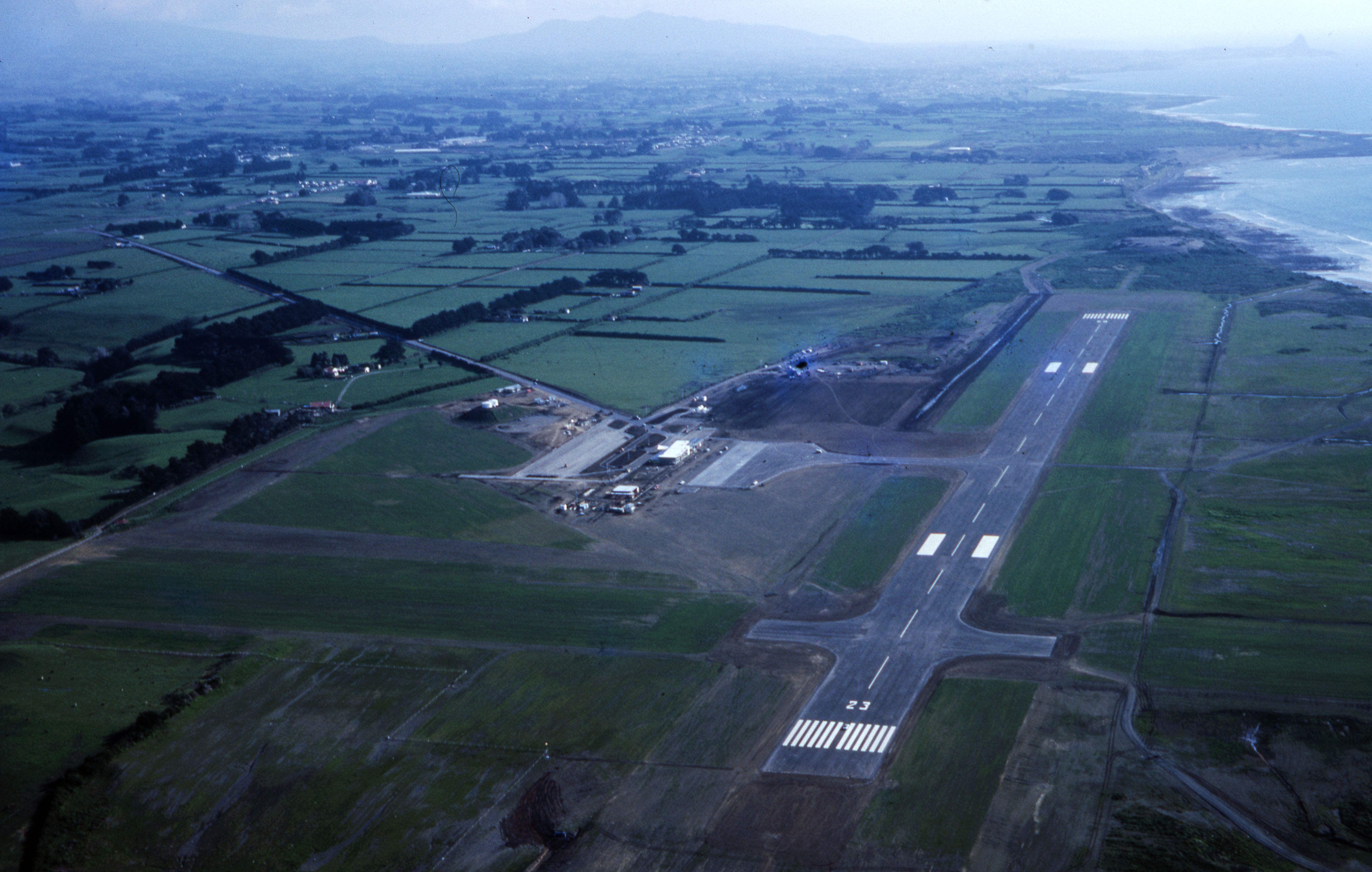
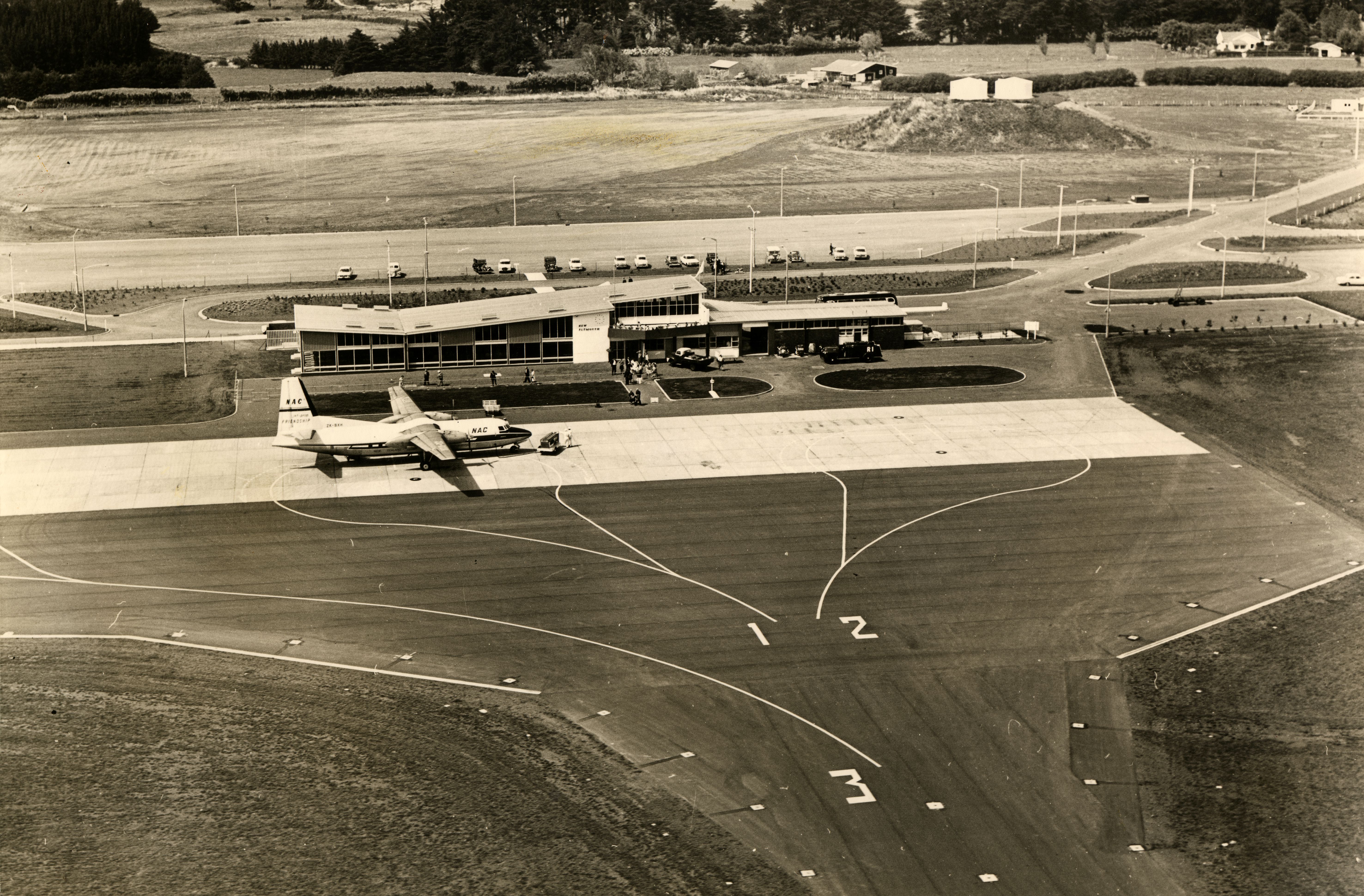
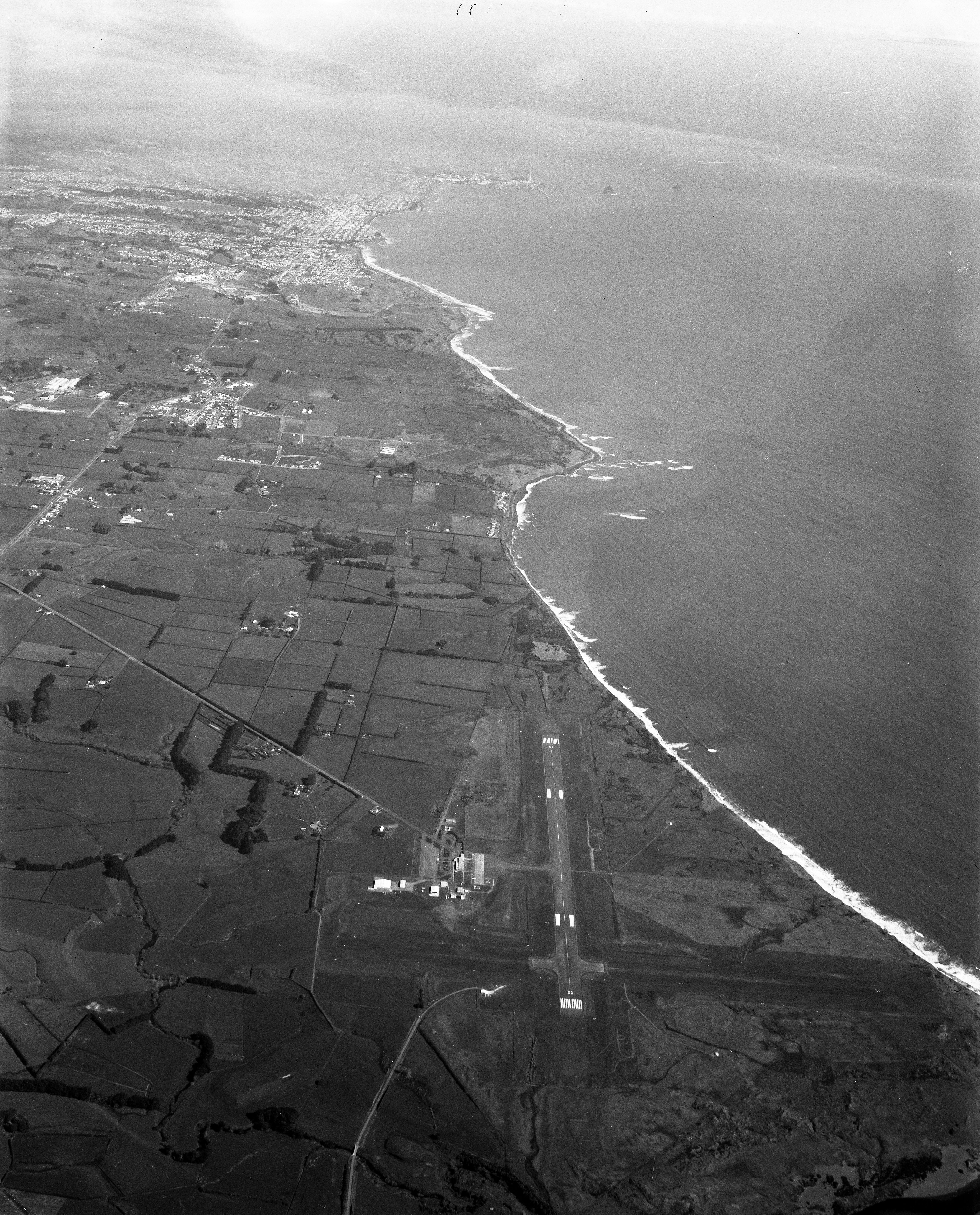
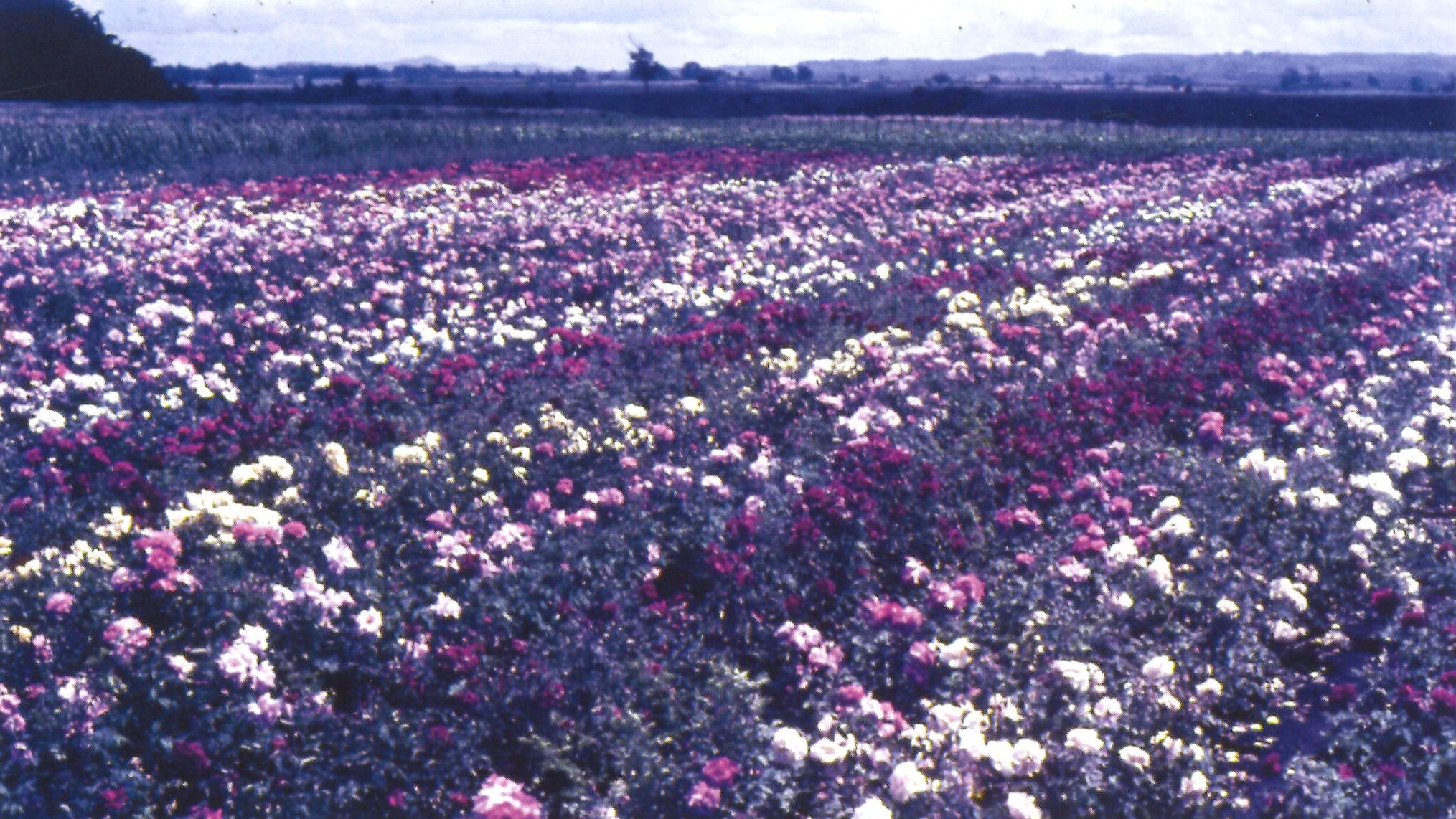
Airport Drive runs off State Highway 3 just east of Bell Block. Leading, sensibly enough, to New Plymouth airport, it was named after the airfield became operational in the 1960s.
Originally known as Brown Road, Airport Drive is situated on land confiscated from Puketapu hapū by the Crown in the 1800s. New Plymouth's first airport was constructed on part of this block in 1933. Members of the local Aero Club, helped by Great Depression work gangs, transformed rough paddocks on the south side of SH3 into the largest all-grass airfield in the country, officially opened by Governor-General Viscount Galway on 21 March 1936. It was taken over by the Ministry of Defence during the Second World War and used as a pilot training station for the Royal New Zealand Airforce but remained in commercial use for another 20 years and eventually turned into an industrial estate featuring several roads named after aircraft and aviation companies.
It was in the 1960s that the need for a longer, sealed runway suitable for heavier aircraft became pressing. A coastal site was suggested for a replacement airfield and, with 600 acres requisitioned under the Public Works Act, the city’s present airport was built. In just 18 months, what had been lupin-covered sand dunes were transformed at a cost of £925,000 and the new airport became operational in November 1966. Dubbed “one of the prettiest… in New Zealand” it was officially opened on 4 March 1967 by Prime Minister Keith Holyoake, Minister of Transport John McAlpine and local MP Ronald Barclay. A crowd of 25,000 people attended the ceremony with the Daily News reporting that they consumed 36,000 ice creams in the hot weather.
Famous local nursery Duncan & Davies purchased land on what was still Brown Road in the 1960s for growing roses, and crops of 30,000 blooms were being raised there by the 1970s. The area was also once home to Puketapu Hill, an historic urupā or burial ground, and Puatu Pā, with Ninia Pā and Tima Pā situated where the original aerodrome was built.
The airport’s brand new terminal, known as Te Hono which means “to connect” and designed to tell the story of both Te Ātiawa iwi and Puketapu hapū, was completed in 2020.
This story was originally published in the Taranaki Daily News.
Please do not reproduce these images without permission from Puke Ariki.
Contact us for more information or you can order images online here.